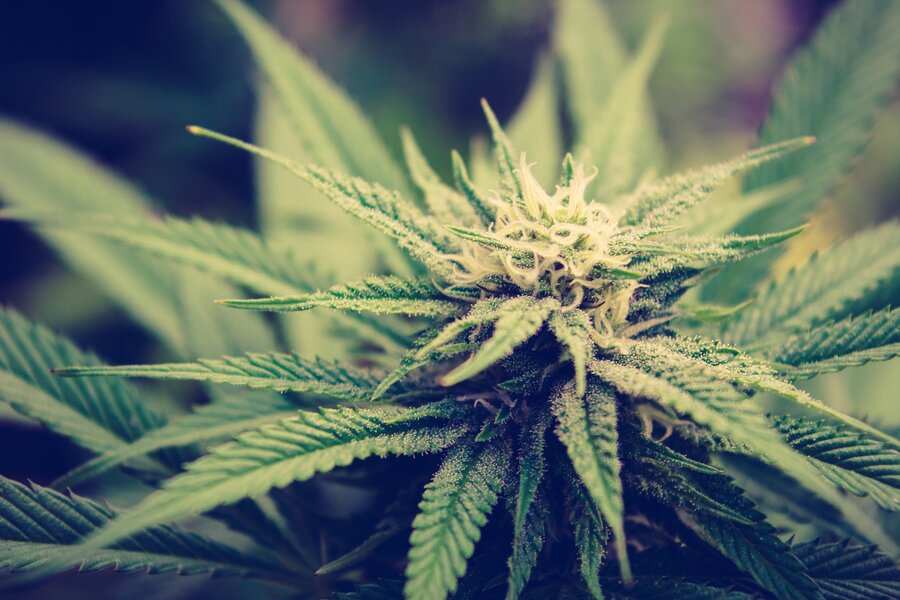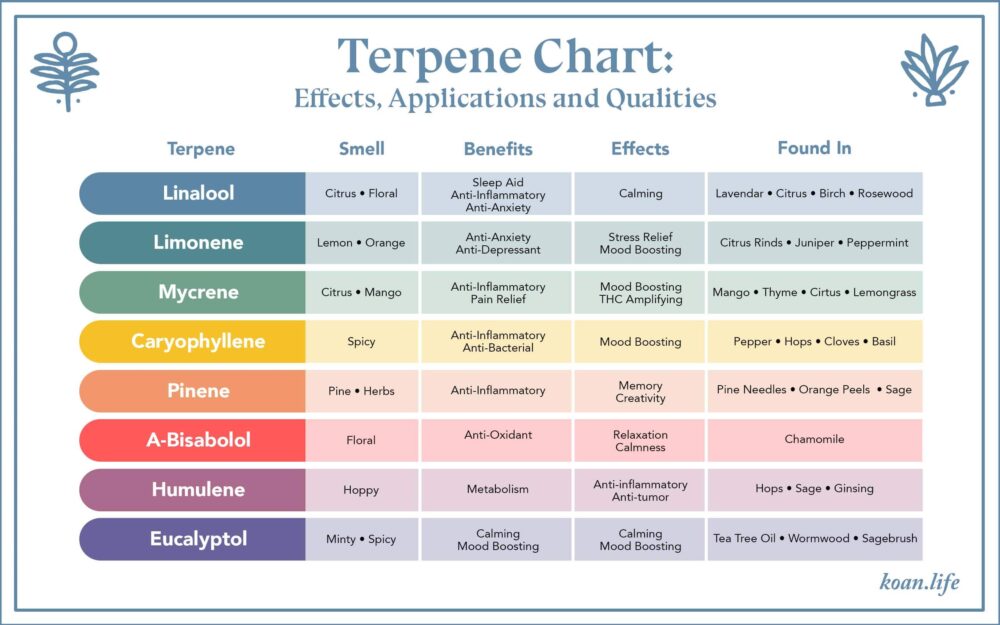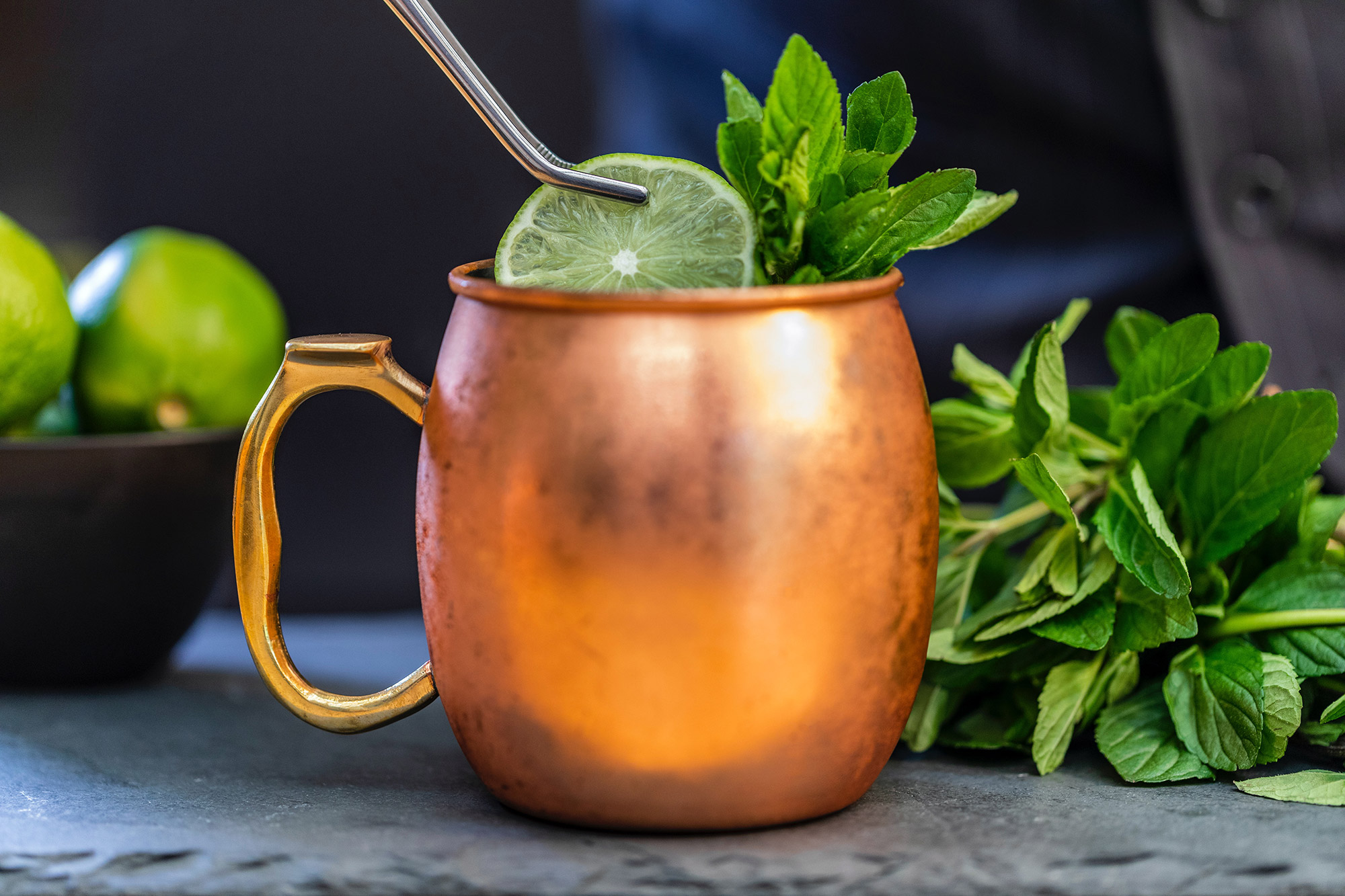Understanding Terpenes– Your Guide to Cannabis Terpenes

Table of contents
What Are Terpenes?
THC, CBD, Cannabinoids…these are all terms that the average cannabis consumer comes across on a regular basis, but as researchers continue to unravel the mysteries of this versatile plant, the canna-community will undoubtedly find itself inundated by new terminology. If you’ve been a consumer or part of the industry in the past couple of years, chances are that you’ve heard others throwing around a term that may leave you scratching your head — terpenes.

So, what are terpenes or terps as they’re sometimes referred? You might be surprised to discover that you’ve spent your entire life surrounded by examples of terpenes being used in day-to-day products around the home. That’s because terps are naturally occurring compounds found not only in cannabis, but most other plants as well. If you’ve ever wondered what gives pine trees, lemons, or your favorite flower their distinct aromas, you can consider the mystery solved as terpenes are the responsible party.
Most plants maintain what is referred to as a terpene profile. Although you may know a plant by its dominant terpene, there are oftentimes numerous other secondary terpenes in the mix, creating wildly unique profiles. When it comes to cannabis, researchers are discovering that terps likely play a role in more than scent or taste but can influence the effects as well.
The topic of terpenes is one that can quickly become complicated with intricacies and nuances. That’s why we decided to address some common questions and create an easy-to-understand terpene chart highlighting some of the more prominent terps you’ll likely run across in the world of cannabis.
Do Terpenes Affect My High?

Most likely. Answering this with the definitive “Yes!” felt a bit disingenuous given the fact that more research is needed before we can consider it a closed case. That being said, countless studies suggest that terpenes absolutely influence various effects in terms of a cannabis high. This influence that terpenes have is what many refer to as the entourage effect. Although most terpenes at therapeutic doses do not elicit intoxicating effects, they are considered by many, psychoactive in nature. This simply means that their effects are largely — but not always — cognitive. For example, as you can see on the terpene chart, linalool has shown to produce calming effects, limonene can serve as a mood booster, and pinene has shown to increase creativity — all effects that ultimately stem from the brain. Additionally, you’ve likely come across strains of flower with a similar THC potency, but that produce totally different effects. For example, one flower strain with a 22% THC concentration may have produced stimulating effects (what most refer to as a “sativa”) and a different strain that also has 22% THC concentration may have produced sedative effects (colloquially known as an “indica”). If you’ve ever wondered how that could happen considering the identical THC potency, the answer is most likely the terpene content.
Do Terpenes Have Medical Value?
As with the previous question, we must restrain ourselves from answering with a resounding “of course!”, so we will once again go with “most likely”. Conditions like anxiety, insomnia, and inflammatory or neuropathic pain affect a large swath of people globally and as the regulatory barriers around cannabis use continue to fall, researchers and patients alike consistently praise the medical potential of terpenes.
For the nearly 20% of American adults suffering from an anxiety disorder, studies suggest that terpenes commonly found in cannabis like pinene, a-bisabolol, and linalool may possess unique medical value in terms of reducing symptoms of anxiety disorders.
If we consider the 70% of recreational cannabis users who report cannabis as a useful tool for sleep, terps like linalool or myrcene are likely contributing factors that create a synergistic relationship with cannabinoids like THC and CBD to produce those restful nights.
Terpenes possess more than potential neurological benefits. Beta-Caryophyllene, a terpene which you may recognize by the spicy aroma and taste found in black pepper, has shown evidence of antioxidant and antimicrobial properties.
Although researchers have their work cut out given the thousands of naturally occurring terpenes (fun fact: scientists have identified over 150 terpenes produced by cannabis and over 20,000 terpenes in nature), canna-consumers should recognize the fact that the research community is on the cusp of unearthing some potentially groundbreaking evidence around the medical value of terpenes.
How Do I Know if My Cannabis Has Terpenes?
All cannabis has terpenes. Although this may make the process of selecting a cannabis product based on terps seem like a straightforward one, there’s more to the story. Much like snowflakes or fingerprints, a cannabis plant’s terpene profile is generally unique. These profiles can be very similar between two plants, or even two harvested batches of the same plant, but the odds of them being identical are on par with buying a winning lottery ticket.
So, how do you best harness the potential power of terpenes? Most seasoned canna-consumers know to ask their budtender for a certificate of analysis (COA) before purchasing a product. This is a document provided by third-party testing labs which show a product’s cannabinoid content as well as test results for potentially harmful substances like heavy metals, pesticides, and mold. If you’ve spent much time looking at COAs though, you’ve probably noticed that they’re lacking information around terpene profiles. For this reason, many consumers are now asking their budtenders for a product’s terpene analysis alongside its COA. This document, which we explore in our terpene analysis article, provides insight into the various terpenes and their concentrations within a product.
Even with a COA and terpene analysis in hand, consumers still face the hurdle of inconsistent and/or inaccurate product dosages. This concern has plagued cannabis users (and brands) for years and until recently, there was no viable solution in sight. Inconsistent or inaccurate dosing creates an environment for canna-consumers that makes repeating positive cannabis experiences (or avoiding negative ones) practically impossible. This is due to the fact that, if you aren’t confident of your product’s contents, you forgo the ability to accurately document and replicate consumption preferences in the future. Fortunately, there’s a new solution to this problem.
How to Get Consistent and Accurately Dosed Cannabis Products
As mentioned, until recently the thought of having access to accurately and consistently dosed cannabis products was very difficult or impossible for consumers. Thanks to technological advances in the world of cannabis infusion and product development, brands like Koan are revolutionizing the relationship that you can expect with cannabis.
Koan’s award winning single-serving cordials are taking the cannabis industry by storm by incorporating laboratory precision production methods with consistent and verifiable cannabinoid and terpene potency from batch to batch. No more playing the guessing game with your cannabis consumption. By removing the inconsistencies of cannabis use, Koan Cordials allow users to shift their focus on dialing in their consumption, making the most out of their cannabis by prioritizing mood and experience.
If your local dispensary is sold out of Koan’s quick onset, water-soluble cordials, we have a solution — ordering online and having them shipped directly to you (California residents only). From Delight to Calm, and Wonder to Create, Koan provides blend options to amplify and enhance nearly any desired mood. Even the sense of passion can be enhanced with Koan’s Love Cordial, which is precision-calibrated to boost your sensuality and push your pleasure over the edge. The best part is that you no longer have to worry about dosage accuracy or consistency from batch to batch. In other words, if you find that Koan’s Balance Cordial delivers the mindset that you’re looking for, you can be confident that the experience will be repeatable time and time again in the future. If you’re unsure which experience best fits you, we recommend spending some time reviewing our terpene chart (see above) to determine your goals and desired effects. From there, the quest is as simple as identifying a Koan Cordial that is dominant in the terpene(s) you’ve selected from the chart above and diving in.
Be it with Koan or under the guidance of your own research, considering cannabinoid and terpene content in your product selection process is certain to foster a sustainably rewarding relationship with cannabis, both physically and spiritually.
This article is for informational purposes only and not to be used as medical advice. Please speak with a medical professional before making any changes to your diet, medications, or daily routine. These statements have not been evaluated by the FDA. These products are not intended to diagnose, treat, cure, or prevent any disease.
References:
- https://www.sciencedaily.com/releases/2021/07/210714110455.htm
- https://www.nami.org/About-Mental-Illness/Mental-Health-Conditions/Anxiety-Disorders#:~:text=Over%2040%20million%20adults%20in,develop%20symptoms%20before%20age%2021.
- https://www.sleepfoundation.org/natural-sleep-aids/marijuana-for-sleep
- https://koan.life/post/why-does-cannabis-make-me-sleepy/
- https://pubmed.ncbi.nlm.nih.gov/1983154/
- https://www.ncbi.nlm.nih.gov/pmc/articles/PMC6331975/


